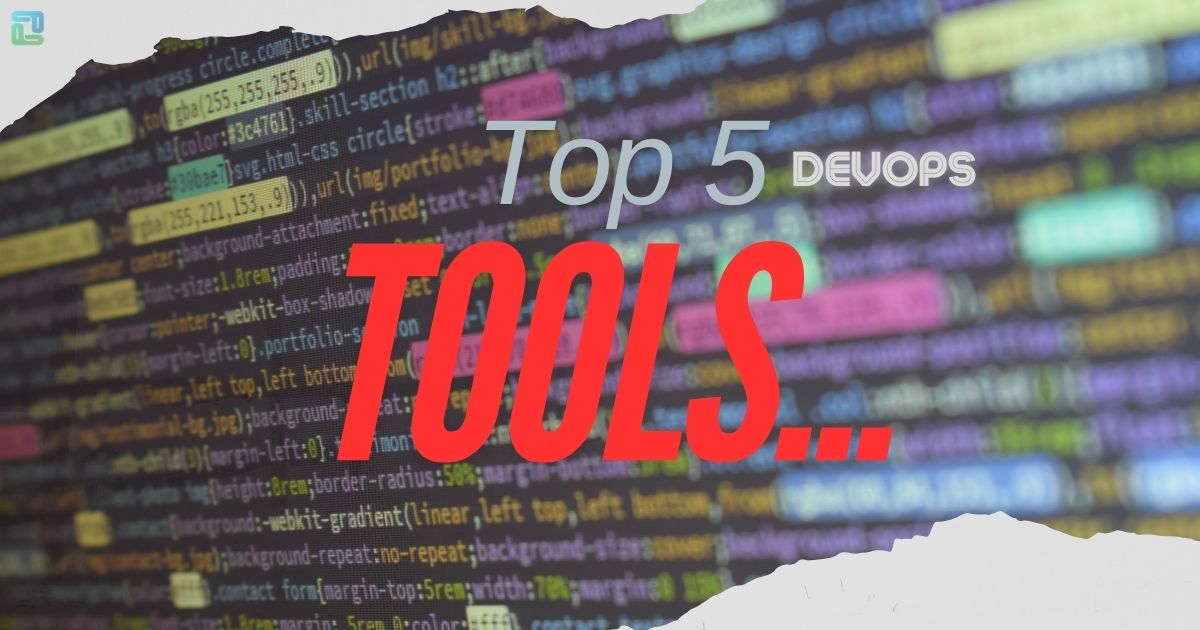Top 5 Essential Tools for a Successful DevOps Adoption

Here are the five essential tools for successfully adopting the DevOps movement.
DevOps has emerged as a key practice for organizations aiming to bridge the gap between software development and operations. The goal is to streamline the software delivery process, making it faster, more efficient, and resilient to errors. To achieve this, the right set of tools is crucial for automating various stages of development, deployment, and monitoring. This blog highlights the top tools across five critical categories: Continuous Integration, Configuration Management, Continuous Inspection, Containerization, and Virtualization.
Tools for DevOps Adoption An efficient software development process requires the
right set of tools, and DevOps is no different. The right tools can greatly enhance DevOps practices by enabling seamless information sharing, process automation, reducing deployment time, and ensuring continuous delivery. Core DevOps tools include continuous integration platforms, configuration management systems, and containerization technologies. Continuous integration tools automate the testing and feedback cycle, helping teams quickly detect and fix code issues. Configuration management platforms, on the other hand, focus on tracking and managing changes in the software environment, automating infrastructure, and maintaining a smooth software delivery process. Other tools facilitate standardizing builds, enhancing collaboration between developers and operations, and monitoring systems.
DevOps can also integrate well with programming languages like Python, focusing on collaboration, automation, and continuous improvement across the development lifecycle. In Python development teams, DevOps practices can enhance:
- Automation,
- Infrastructure as Code (IaC),
- Test automation,
- Scripting and tooling.
5 Set of DevOps Tools
The DevOps tools can be categorized in five groups depending on its purpose in the particular stage of DevOps lifecycle
- Continuous Integration: Jenkins, Travis, TeamCity
- Configuration Management: Puppet, Chef, Ansible, CFengine
- Continuous Inspection: Sonarqube, HP Fortify, Coverity
- Containerization: Vagrant, Docker
- Virtualization: Amazon EC2, VMWare, Microsoft Hyper-V
Continuous Integration (CI)
Continuous Integration (CI) is a DevOps practice where developers frequently commit code into a shared repository, and each commit triggers an automated build and testing process. The objective is to detect issues early in the development cycle, ensuring that the codebase is always in a working state. Below are the top tools for CI:
a) JenkinsJenkins is the most popular open-source automation server used for CI/CD. It integrates with various DevOps tools and allows users to define pipelines using a declarative syntax or script. Jenkins supports hundreds of plugins, making it versatile and extensible to suit various use cases.
Key Features: Easy setup, highly customizable, strong community support.Use Case: Automating builds, running tests, deploying code, and monitoring CI pipelines.
Travis CI is a cloud-based CI tool that automates code testing and deployment. It is tightly integrated with GitHub, making it ideal for open-source projects and smaller teams. Travis CI supports various languages, including Java, Ruby, Python, and Go.
Key Features: Simple setup, GitHub integration, free for open-source.Use Case: Automating code builds and tests for small to mid-sized development teams.
TeamCity, developed by JetBrains, offers advanced CI features and integrates seamlessly with version control systems like Git, Mercurial, and Perforce. It provides robust testing tools and supports build chain optimization.
Key Features: Cloud and on-premises options, support for build pipelines, powerful testing features.Use Case: Complex enterprise CI pipelines and build management for large teams.
Configuration Management
Configuration Management tools ensure that infrastructure is automated and standardized across environments. They help maintain consistency by managing infrastructure as code (IaC), enabling automated provisioning, deployment, and updates. Let’s look at the key tools in this category:
a) PuppetPuppet is a popular configuration management tool used for automating infrastructure management and delivery. It provides a declarative language to define configurations and state. Puppet's master-agent architecture allows centralized control over multiple nodes.
Key Features: Centralized configuration, automation, high scalability.Use Case: Managing large-scale server environments with thousands of nodes.
Chef is another powerful automation platform for managing infrastructure at scale. It uses "recipes" and "cookbooks" to define how infrastructure should be configured. Chef is flexible and supports various cloud providers.
Key Features: Supports multiple cloud environments, flexible configuration syntax.Use Case: Automating infrastructure in hybrid cloud environments.
Ansible is a simple yet powerful automation tool. Unlike Puppet and Chef, Ansible is agentless, which means it doesn’t require an agent to be installed on the nodes. Instead, it uses SSH to communicate with machines, making it lightweight and easy to manage.
Key Features: Agentless, simple YAML syntax, fast deployments.Use Case: Quick and easy infrastructure automation, configuration management for small and medium-sized environments.
CFEngine is one of the oldest configuration management tools still in use. It allows administrators to define configurations, enforce them across systems, and maintain compliance. CFEngine is highly efficient and can manage a large number of devices with minimal system overhead.
Key Features: Lightweight, scalable, efficient resource management.Use Case: Managing distributed systems and ensuring compliance with security policies.
Continuous Inspection
Continuous inspection tools analyze the code to identify bugs, vulnerabilities, and code quality issues. These tools help maintain the integrity of the codebase and ensure that technical debt is minimized over time. Here are the top tools for continuous code inspection:
a) SonarQubeSonarQube is an open-source platform used for continuous inspection of code quality. It integrates with CI tools to automatically analyze code for potential bugs, vulnerabilities, and code smells. It supports multiple languages, including Java, JavaScript, C#, and Python.
Key Features: Integrates with CI tools, customizable rules, support for multiple languages.Use Case: Ensuring code quality and identifying security vulnerabilities early in the development cycle.
HP Fortify focuses on security vulnerabilities, scanning code for security flaws during development. It provides detailed reports and remediation guidance to help teams fix issues before they reach production.
Key Features: Comprehensive security scanning, detailed reports, integration with CI pipelines.Use Case: Scanning code for security vulnerabilities in highly regulated industries.
Coverity, developed by Synopsys, provides static code analysis that helps identify defects in source code. It is used by many organizations to maintain high-quality software and ensure compliance with coding standards.
Key Features: Static code analysis, defect tracking, integration with various IDEs.Use Case: Large-scale code analysis for enterprises working with complex codebases.
Containerization
Containerization is the cornerstone of modern DevOps workflows. It allows you to package an application along with its dependencies into a container, ensuring consistent behavior across different environments. Containers are lightweight, fast, and easily scalable. Here are the best containerization tools:
a) VagrantVagrant is an open-source tool that helps automate the creation and management of virtualized development environments. Although not a full-fledged containerization tool like Docker, Vagrant can be used to spin up virtual machines with specific configurations, making it useful in containerized workflows.
Key Features: Automation of environment setup, easy to configure VMs, simple command-line interface.Use Case: Development environments that need to be reproducible and easy to share across teams.
Docker is the most widely used containerization platform. It allows you to build, ship, and run applications in containers, ensuring that the application works consistently across different environments. Docker is highly portable and integrates well with CI/CD pipelines.
Key Features: Lightweight, portable, fast deployments, supports multi-container applications.Use Case: Building and deploying microservices-based applications in a scalable and portable manner.
Virtualization
Virtualization enables you to run multiple operating systems on a single physical machine. Virtualization tools help reduce hardware costs, improve resource utilization, and allow for faster provisioning of resources. The following are some of the top tools in this space:
a) Amazon EC2Amazon EC2 (Elastic Compute Cloud) is a web service that provides scalable virtual servers in the cloud. EC2 allows you to spin up virtual machines with different configurations on-demand, offering flexibility and cost efficiency. It’s widely used for hosting applications and services in the cloud.
Key Features: On-demand virtual servers, wide variety of instance types, scalability.Use Case: Deploying applications in the cloud with the ability to scale up or down based on demand.
VMWare is a leading provider of virtualization software, offering products that range from desktop to server-level virtualization. VMWare vSphere is one of its flagship products that enables businesses to build and manage virtualized data centers.
Key Features: High availability, load balancing, extensive management features.Use Case: Enterprise-level server virtualization for data centers and cloud infrastructure.
Hyper-V is Microsoft’s virtualization platform, allowing users to create and manage virtual machines on Windows. It integrates seamlessly with other Microsoft services, making it ideal for organizations heavily invested in the Microsoft ecosystem.
Key Features: Seamless integration with Windows Server, strong performance, low overhead.Use Case: Virtualization of Windows-based environments for development, testing, and production.
Conclusion
The adoption of DevOps practices requires the right set of tools that align with your organization’s goals and workflows. Continuous Integration tools like Jenkins and TeamCity help automate the build and testing process, while Configuration Management tools like Ansible and Puppet ensure consistency across environments. For code quality and security, Continuous Inspection tools like SonarQube and HP Fortify play a vital role. Containerization with Docker is critical for modern microservices architectures, and virtualization solutions like Amazon EC2 enable scalable infrastructure. By choosing the right combination of these tools, businesses can successfully implement DevOps and accelerate their software delivery process.
At Tristiks Technologies, we have successfully incorporated Jenkins as continuous integration tool and Sonarqube as inspection tool in the respective steps of DevOps. So, leveraging the expertise of a DevOps consulting company can further enhance the optimization and strategic implementation of these tools, ensuring a tailored and efficient DevOps workflow for your projects. We use Amazon Web Services (AWS) as virtualization tool for cloud computing and launching virtual servers.
